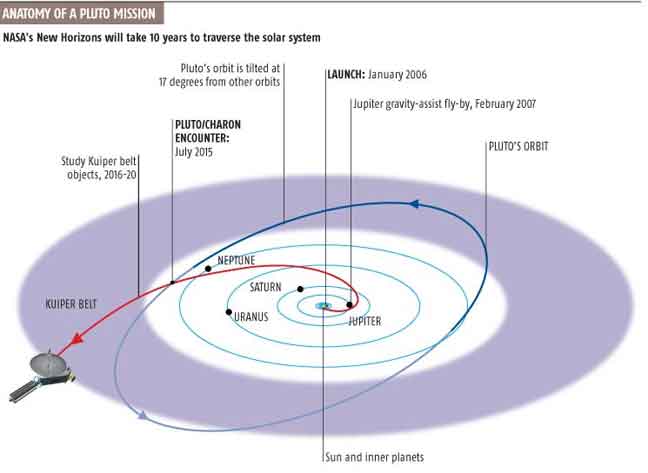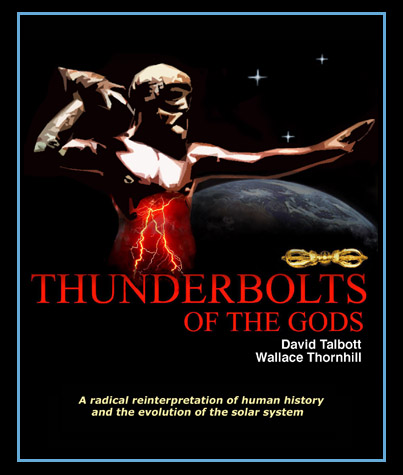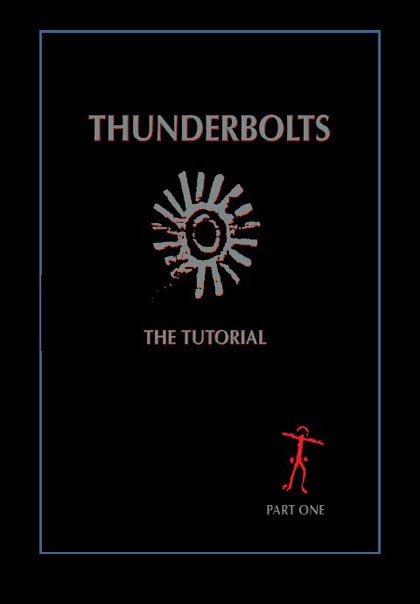
home •
about •
essential guide •
picture of the day •
thunderblogs •
news •
multimedia •
predictions •
products •
get involved •
contact

Credit: NASA
pic of the day
archive
subject index
abstract
archive
Links:
Society for
Interdisciplinary
Studies

Thunderbolts of the Gods is a
108 page 8-1/2 x 11 full color monograph based on the life work of the two
authors--a revolutionary synthesis of comparative mythology and the
newly-discovered "Electric Universe".

The Monograph includes
an hour-long DVD introducing various aspects of the Electric
Universe explained by members of the Thunderbolts Group.
Dec 15, 2005
Getting to Know Pluto
The mission to explore Pluto will take measurements of some of the most distant bodies in the solar system. But to know what they’re measuring, scientists will have to overcome the disabilities of preconceptions, traditions and institutions.
The New Horizon mission to explore Pluto is preparing for launch next month. The planned orbit of the instrument package is depicted above. A report in the December 8, 2005, NewScientist.com news service explains what mission scientists expect to find.
Chief scientist S. Alan Stern says, "I can tell you everything we know for sure about Pluto on about three 3-by-5 file cards." One might expect the file cards to contain the measurements that have been taken of Pluto—its diameter, temperature, period, distance, etc.
The report should have heeded the admonition posted in a local medical lab: “It’s easier to take measurements than to know what you’re measuring.” Instead of confining itself to what could be written on file cards, the report launches into conjectures and inferences from the nebular hypothesis of planet origin. Writings on that hypothesis fill libraries of books and journals. The possibility of discovering new knowledge—of getting to know what the new measurements of Pluto might mean—is buried under stacks of preconceptions, traditions and institutions.
Since its proposal at the end of the 18th Century, the nebular hypothesis has not fared well in the face of contradictory observations and counterfactual logic. The hypothesis died early in the 20th Century, but the good old boys who control the publicity and the funding propped up the cadaver, and the constant jiggling has given it a pretense of life. But the constant patching and adjustment still fails to predict the next findings.
The hypothesis provides the ersatz knowledge that Pluto and the other Kuiper Belt Objects (KBOs) beyond Neptune contain “pristine ice,” “leftover building blocks” from the formation of the solar system, material that “stuck together” 4.5 billion years ago. Because computer simulations indicate that an Earth-sized body should have formed, “something ... shut off the supply.” Simulations “do a reasonably good job of producing families of planets,” but the early stages are inferential. Because they “know” that KBOs have preserved the early conditions, mission scientists expect that the new measurements will refine those inferences. The size distribution of KBOs, for example, will be determined from counting “impact craters” on Pluto.
The Electric Universe expects mission scientists to be surprised. The conclusions derived from a theory are only as good as the assumptions that go into it, and computers will simulate any garbage that they’re fed. The nebular hypothesis is utterly devoid of the knowledge of plasma and its electrical properties. It’s a hypothesis that became dominant before scientists realized that 99 percent of the universe is plasma. The conclusions derived from the hypothesis are necessarily devoid of any connection with reality.
EXECUTIVE EDITORS:
David Talbott, Wallace Thornhill
MANAGING EDITOR:
Mel Acheson
CONTRIBUTING EDITORS: Michael Armstrong, Dwardu Cardona, Ev Cochrane,
C.J. Ransom, Don Scott, Rens van der Sluijs, Ian Tresman
WEBMASTER: Michael Armstrong
Copyright 2005: thunderbolts.info